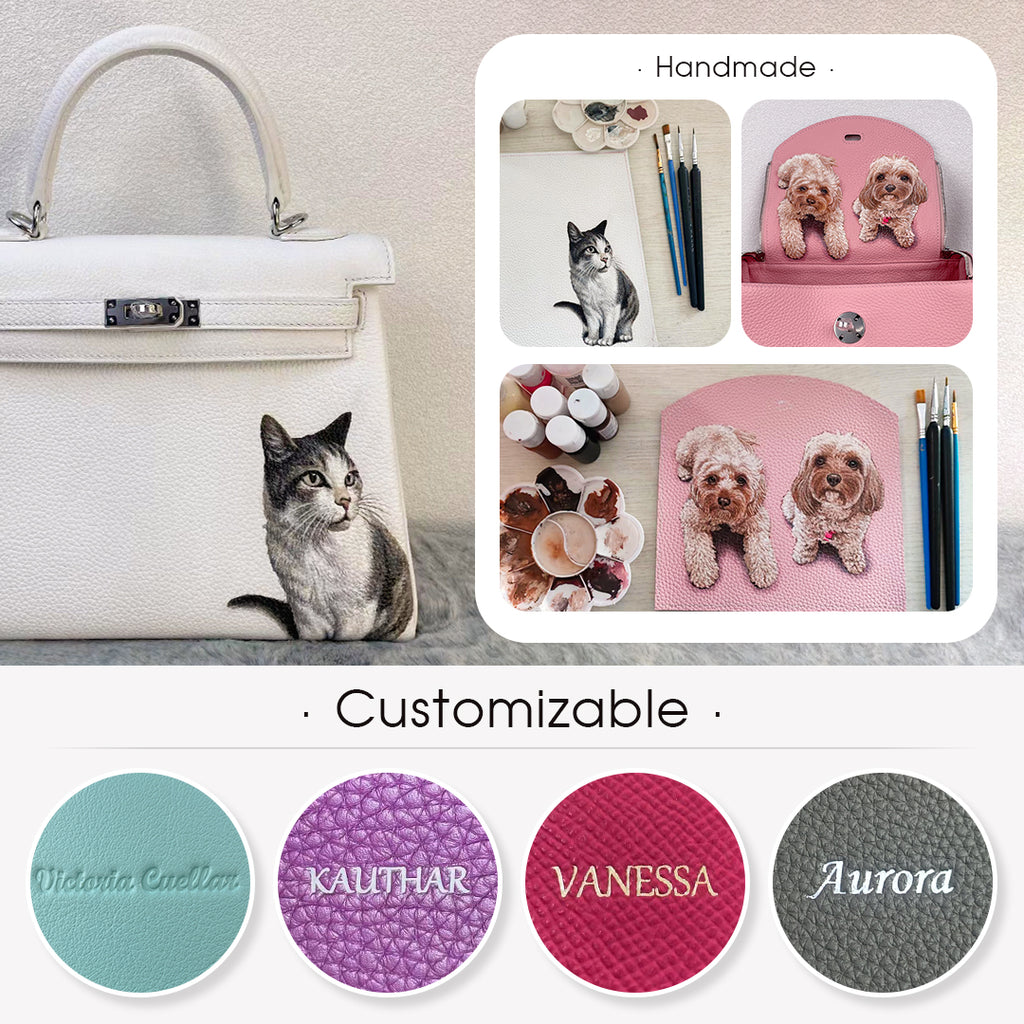The Most Detailed Handmade Leather Bag Steps
Leather handbags add a signature look to any wardrobe, and making one from scratch takes that style up a notch. If you’ve ever admired handcrafted leather bags, but been daunted at the thought of attempting your own, have no fear -- with just a few simple tools and materials, anyone can make their unique work of art.
Handmade leather bags are more than just an item of clothing or fashion accessory - they bring a story, making each bag unique and special. Handmade leather bags never go out of style and evoke memories and feelings that no other item can create. If you wish to opt for a classic look, soft feel to the touch, and timelessness – check out the Tianqingji handmade leather bags.
It takes around half a year or even one year for each bag to reach from conception until inception. The final product is a timeless, exuberant bag that steals everyone’s heart!
This blog post will discuss detailed step-by-step instructions on how handmade bags are created at Tianqingji.

Gather Materials
To make a handmade leather bag, High-grade leather, hardware accessories, cutting knife, pliers, cone, round cutter, diamond cutter, hedge trimmer, hammer, cow foot oil, adhesive, needle and thread, edger, snap button tool, hand sewing fixture, oil side tool.
The production process for Tianqingji's handmade bags is complex and requires specialized tools and techniques. Professional leather glue and expert needlework are just a few elements that go into creating a beautiful and durable bag. The maker’s technical skills are tested as they strive to create a bag that will withstand the test of time. In fact, some of Tianqingji's bags have been known to last for over a decade, a testament to the skill and craftsmanship of the maker.

How the Production Process Works at Tianqingji?
Step #1:
The design process for creating a leather bag begins with the creation of a detailed design drawing by the designer. This drawing serves as the blueprint for the rest of the production process.

Step #2:
Next, cardboard cards are made based on the design drawings, with an average of 200 cards needed for a single bag. These cards are used to cut and shape the leather.

Step #3:
Finally, the skin sample is carefully selected for the highest quality, and, if possible, a whole piece of leather is used to ensure a perfect final product. The thickness of the leather is even measured with a vernier caliper for precise accuracy.

Step #4:
Before beginning the crafting process, it is essential to carefully evaluate each piece of leather to determine its suitability for different bag parts. The leather is then cut by hand using a leather cutting knife and the prepared paper plate, a task that requires the experience and skill of the craftsman.

Step #5:
Early manual processes, such as shoveling, oiling, and glue bonding, are crucial in creating a high-quality bag. Shoveling involves adding different thicknesses of leather to create a smooth and delicate finish. The leather edges are then treated with oil and ironed with an edge ironing machine before being polished to a smooth finish. This process may be repeated multiple times to achieve the desired result.
The process of glue bonding requires the skill and precision of the craftsman. It is vital to apply the glue evenly and quickly to avoid any excess or unevenness. The strength and technique used when bonding the leather are also crucial in achieving a smooth, uniform finish without distorting the shape of the material.
Tianqingji prioritizes using environmentally friendly glue, such as water-based glue imported from the United States. After applying the glue, the leather is tapped with a hammer to create a smooth surface and ensure a strong bond. Maintaining a consistent level of strength is vital in achieving a firm, well-shaped final product. Every process step requires careful attention and skill to create a high-quality leather bag.

Step #6:
After undergoing the previous steps in the leather crafting process, the leather is carefully placed into its designated position and prepared for cutting. Tianqingji uses a combination of French Blanchard's oblique cutting technique and a rubber hammer to ensure that the cuts are precise and vertical.
This allows the front and back holes to align perfectly, producing a professional and seamless final product. Every step of the process is carefully executed to guarantee the highest level of quality in our leather goods
Tianqingji's handmade bags are crafted with the utmost attention to detail and quality, using only the finest leather and particular wax thread for stitching.
Unlike many bags that are machine sewn, every Tianqingji bag is 100% hand sewn using a double-needle saddle stitching technique that is stronger and more durable than machine stitching. In the unlikely event that a needle thread breaks, there will be no continuous thread opening, ensuring the longevity and integrity of the bag.
While hand sewing is time-consuming and costly, ensuring you get a genuinely exceptional leather product is worth the investment.

Step #7:
To create a leather product, several intermediate steps must be taken. These steps may be repeated and interspersed throughout the production process, which can be pretty intricate. Unlike mass-produced items that are made on an assembly line, handmade leather goods are crafted by a single artisan from start to finish.
A professional company like Tianqingji can accomplish this task with a refined finish. The wide range of store design options makes it tempting for women to order a unique and genuine leather bag. From minimalist designs to multi-function tote bags, the variety of handcrafted leather bags is mind-boggling.
We hope this has inspired you to know more about Tianqingji and the process of handmade leather bags. With this Company, you get genuine materials and sturdy designs, ensuring that you invest in a piece that will last you many years.




















